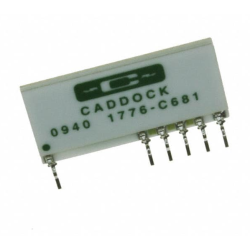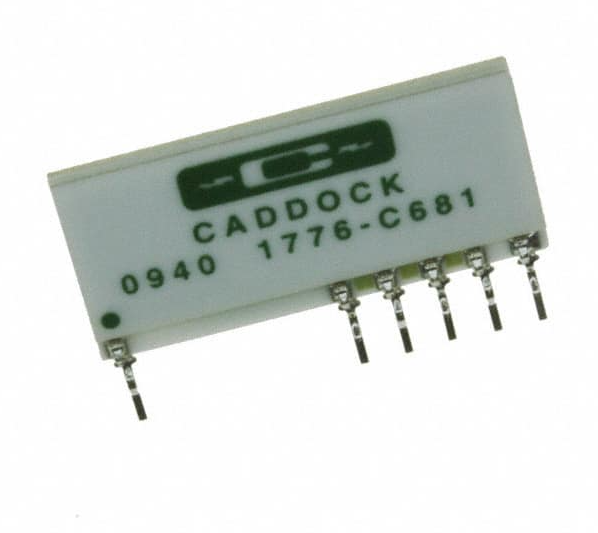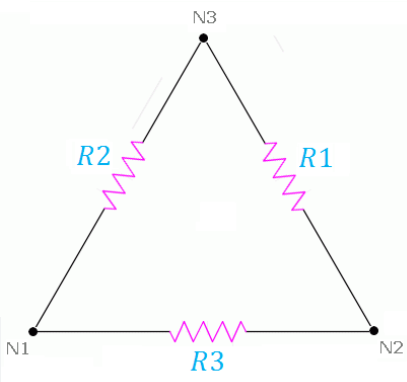Why use a resistor network, and how are they special?

What is a Resistor Network?
A resistor network is a configuration of multiple resistors connected together in a specific pattern. This setup allows for precise control of voltage and current in electronic circuits. By combining several resistors in one package, resistor networks save space, reduce assembly time, and improve the overall reliability of the circuit.
Resistor networks are used in various applications, including analog-to-digital converters, digital-to-analog converters, and in situations where consistent resistance values are crucial. They come in different forms, including series, parallel, and a combination of both, each serving specific purposes.

What Makes Series Resistor Networks Different from Parallel Networks?
In a series resistor network, resistors are connected end-to-end. This configuration causes the current to flow through each resistor sequentially. The total resistance in a series network is the sum of all the individual resistors. This type of network is useful when you need to increase resistance without adding more components.
Parallel resistor networks, on the other hand, have resistors connected side by side. The current can take multiple paths through the resistors, which reduces the total resistance. This setup is ideal when you need to lower the resistance or maintain a consistent voltage across multiple components.
What Are the 4 Types of Resistors?
1. Fixed Resistors
These have a set resistance value that doesn’t change. They are the most common type of resistors used in various applications.
2. Variable Resistors
Also known as potentiometers, these allow for adjusting the resistance. They are used in devices like volume controls and tuning circuits.
3. Thermistors
These resistors change their resistance with temperature. They are commonly used in temperature sensing circuits.
4. Photoresistors
These resistors change their resistance with light intensity. They are used in light-sensing applications, like in automatic lighting systems.
Each type of resistor serves a specific purpose, and choosing the right one depends on the requirements of your circuit.
What is the Difference Between a Resistor Network and a Resistor Array?
While both resistor networks and resistor arrays consist of multiple resistors, they serve slightly different purposes. A resistor network is typically designed for precision applications where the exact resistance values are critical. Each resistor in the network may have a different value, and the configuration can vary depending on the application. Resistor network symbol is triangle, it is also called triangular resistor network.

A resistor array, however, usually consists of resistors with the same value, all connected in a specific pattern. Arrays are often used in digital circuits where uniform resistance is needed across multiple lines. The key difference lies in the flexibility of the resistor network compared to the uniformity of the resistor array.
How Do You Solve Resistance Networks?
Solving resistance networks involves calculating the total resistance of the network, depending on whether the resistors are in series, parallel, or a combination of both.
For series networks, simply add up the resistance values of each resistor. For parallel networks, use the formula:

Where Rtotal is the total resistance, and R1, R2, R3, etc., are the resistance values of the individual resistors.
For more complex networks, you may need to break the network down into simpler series and parallel components and solve each part step by step.
What is the Resistor Network Equation?
The resistor network equation depends on the configuration of the network. For a series network, the equation is simple:

For a parallel network, the equation becomes:

In more complex networks, you may need to combine these equations, applying them to different parts of the network to find the total resistance.
How Do You Read a Resistor Network?
Reading a resistor network involves understanding the specific configuration and the resistance values of the individual resistors within that network. Here's a step-by-step guide to effectively read and interpret a resistor network:
1. Identify the Configuration
The first step in reading a resistor network is to identify the configuration of the resistors. Resistor networks can be arranged in series, parallel, or a combination of both. In a series configuration, resistors are connected end-to-end, meaning the current flows through each resistor sequentially. In a parallel configuration, resistors are connected side by side, allowing current to flow through multiple paths simultaneously. Understanding the configuration is crucial as it determines how you calculate the total resistance of the network.
2. Check for Labels or Color Codes
Each resistor within the network will have a specific resistance value, which can be indicated through numerical labels or color codes. In many cases, resistor networks will have a labeling system printed on them, such as the resistor value in ohms (e.g., "10k" for 10,000 ohms). If the resistors use color codes, you'll need to decode these colors to determine the resistance value. The color bands represent numbers that, when combined, give you the resistance value in ohms.
3. Understand the Package Type
Resistor networks come in various package types, such as SIP (Single In-line Package) or DIP (Dual In-line Package). The package type can influence how you read and connect the network. For instance, in a SIP package, all resistors may share a common terminal, while in a DIP package, resistors may be arranged more flexibly. Knowing the package type helps in correctly interpreting the connections and the overall function of the network.
4. Determine the Total Resistance
Once you've identified the configuration and the individual resistor values, you can calculate the total resistance of the network. If the network is a combination of series and parallel resistors, you may need to break down the network into simpler parts, solve each part individually, and then combine the results to find the total resistance.
5. Analyze the Schematic
If you're working from a schematic, identify the resistor network symbol, which typically shows multiple resistors connected in the chosen configuration. The schematic will also indicate how the network is connected to other components in the circuit, which can give you insights into its function, such as voltage division, signal termination, or current limiting.
6. Consider the Tolerance and Power Rating
When reading a resistor network, also take into account the tolerance and power rating of the resistors. Tolerance indicates how much the actual resistance can vary from the labeled value, typically shown as a percentage (e.g., ±5%). The power rating tells you the maximum amount of power the resistor can handle without being damaged. Both factors are crucial for ensuring that the resistor network will perform as expected under the conditions of your circuit.
What is the Equivalent Resistance of a Resistor Network?
The equivalent resistance of a resistor network is the single resistance value that could replace the entire network without changing the current or voltage in the circuit. For a series network, it’s the sum of all resistors. For a parallel network, it’s calculated using the reciprocal formula.
In practice, calculating the equivalent resistance helps in simplifying complex circuits, making them easier to analyze and understand.
Do Resistor Networks Have Polarity?
Unlike capacitors or diodes, resistors, including resistor networks, do not have polarity. This means they can be connected in any direction within a circuit without affecting their function. This feature makes resistors versatile and easy to use in various configurations.
Should You Use a Resistor Network?
Using a resistor network offers several advantages. They save space on the circuit board by combining multiple resistors into one package. They also improve the reliability of the circuit by reducing the number of solder joints, which are potential points of failure. Additionally, resistor networks can simplify the design process, making it easier to achieve the desired resistance values and configurations.
However, resistor networks may not be necessary for all applications. If your circuit only requires one or two resistors, using discrete components might be more cost-effective. But for more complex circuits, especially where space and reliability are concerns, resistor networks are an excellent choice.
What Are Network Resistors Used For?
l Pull-up and Pull-down Resistors in Digital Circuits
In digital electronics, network resistors are often used as pull-up or pull-down resistors. These resistors help to set the default state of logic lines when no active signal is present. For instance, in a microcontroller circuit, pull-up resistors can ensure that a GPIO (General Purpose Input/Output) pin reads a definite logic level when it’s not being actively driven. This prevents the pin from floating, which could lead to erratic behavior in the circuit.
l Voltage Dividers
In analog circuits, network resistors are commonly used to create voltage dividers. A voltage divider is a simple circuit that reduces a large voltage to a smaller one. By using a network of resistors with specific values, designers can achieve precise voltage levels necessary for various components in the circuit, such as sensors or reference voltages in analog-to-digital converters.
l Current Limiting
Network resistors are also used for current limiting in circuits. In LED circuits, for example, resistors are placed in series with the LEDs to control the amount of current passing through them, ensuring that the LEDs are not overdriven, which can lead to damage. A network resistor can provide consistent current limiting across multiple LEDs or other components in the circuit.
l Signal Termination
In high-speed digital circuits, network resistors are used for signal termination. Termination resistors are placed at the end of transmission lines to match the impedance of the line, preventing signal reflections that can cause data corruption or loss. Network resistors, by offering matched resistor values, ensure that each line in a bus or parallel data path is properly terminated.
l Load Balancing
In power distribution systems, network resistors are employed for load balancing. They help distribute the load evenly across multiple components, reducing the risk of overloading a single part of the circuit. This is particularly useful in applications like power supplies or battery management systems, where consistent load distribution is critical for reliability and efficiency.
l Precision Matching
Network resistors are often used in applications requiring precise resistance matching, such as in operational amplifier circuits or differential amplifiers. In these applications, the performance of the circuit depends heavily on the accuracy of the resistor values. Network resistors, which are manufactured to have closely matched values, ensure that the circuit operates correctly and efficiently.
Where Can I Get Resistor Networks?
If you want to buy some resistor networks for your digital circuits, welcome to contact Jinftry. Jinftry has been committed to providing global technology product users, industrial product users, commercial users, research institutions, etc., semiconductor, electronic component procurement and supporting technical solutions services, as well as ODM solution customization services, has developed into a world-renowned one-stop electronic component supporting services provider and ODM solution customization provider. We can be your most reliable supplier in Asia!







